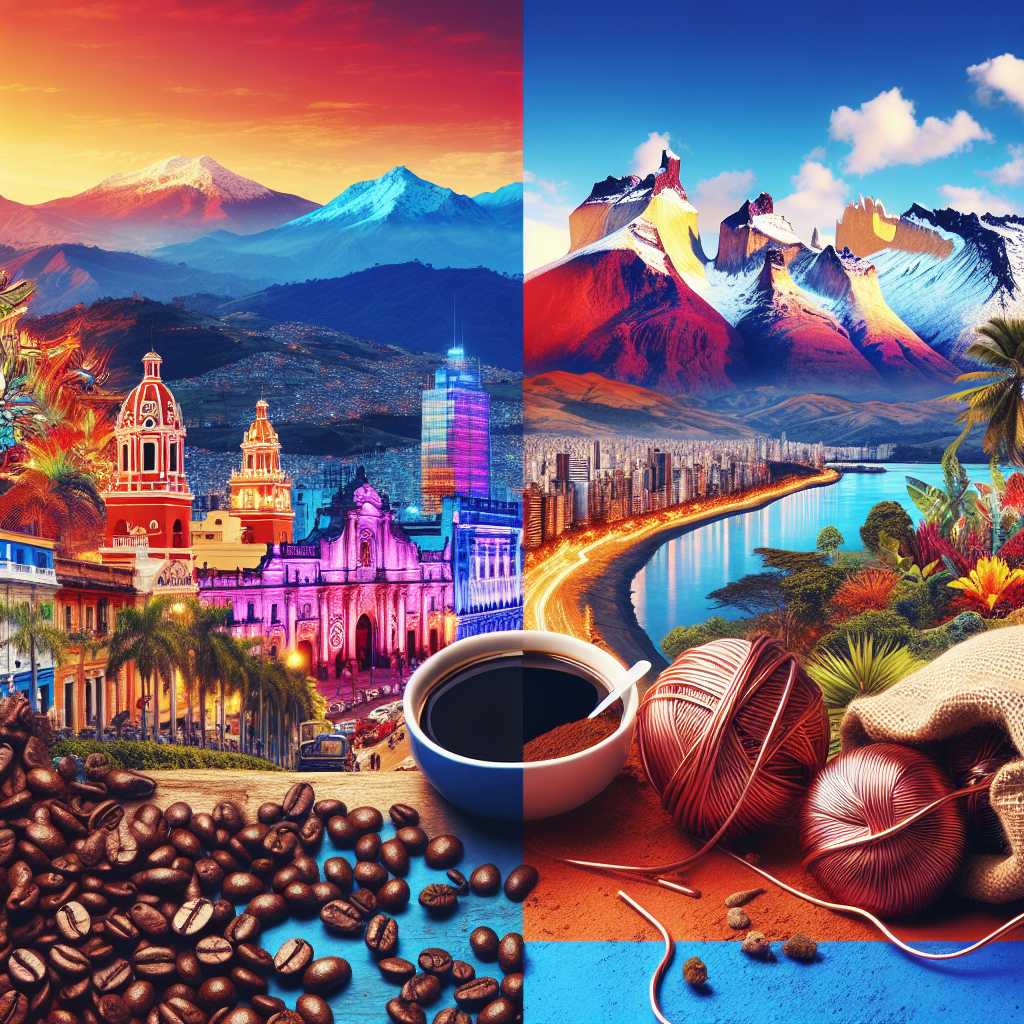The Geopolitical and Cultural Dynamics of Colombia versus Chile: A Comprehensive Comparison
Both Colombia and Chile stand as proud and culturally rich countries in South America, each with their own distinct landscapes, histories, and contemporary challenges. Despite sharing a continent and engaging in mutual Latin American culture, these nations are separated by vast geographical differences, contrasting policies, and unique social dynamics. This article aims to present an extensive comparison between Colombia and Chile through various lenses, including geography, economy, foreign relations, culture, and more.
Geographical Contrasts: From the Andes to the Coasts
Colombia and Chile are situated in the western part of South America, but their geographical features are vastly different. Colombia is known for its lush tropical terrain, Pacific and Caribbean coastlines, Amazon rainforest territory, and parts of the Andean mountain range. In contrast, Chile is notable for its long narrow stretch of land running along the Pacific Ocean’s edge, spanning from the Atacama Desert—one of the driest places on Earth—to glaciers in Patagonia. The Andean spine also shapes Chile’s topography but does so in different ways than it does for Colombia.
Population and Demographics: A Tale of Two Nations
The demographic compositions of Colombia and Chile also tell disparate stories. With a population exceeding 50 million people, Colombia boasts a diverse society with a blend of European, Indigenous, and African ancestries. Meanwhile, slightly over 19 million people reside in Chile where the influence from European (primarily Spanish) descent is strong alongside a smaller percentage of indigenous Mapuche peoples.
Economic Perspectives: Resource-Based Economies with Varied Focuses
Economically speaking, both countries have major sectors that oscillate based on global markets. Colombia leverages its significant oil reserves and is also a major coffee producer. This agricultural heritage stands alongside a robust mining sector which includes coal, nickel, and gold. On the other hand, Chile is known as the world’s largest copper producer and thus relies heavily on this export for economic stability; it also focuses significantly on lithium mining.
Political Environment: Different Paths to Governance
Colombia has experienced tumultuous periods that include several decades of armed conflict involving government forces dealing with guerrilla groups and drug cartels which have impacted its political climate. However, recent peace treaties with major guerrilla groups have aimed at stabilizing the political landscape. Conversely, Chile has had its share of political turbulence including a military dictatorship under Augusto Pinochet that ended in 1990. Today it champions one of the most stable democracies in Latin America.
Cultural Landscapes: Rich Traditions and Vibrant Modernity
Despite differences, both nations take great pride in their rich cultural heritage rooted in music, dance (like cumbia in Colombia or cueca in Chile), art, literature, and cuisine that reflects a mix of native and Spanish colonial influences. Colombian and Chilean literature has made wide-reaching impacts featuring Nobel laureates such as Gabriel Garcia Marquez and Pablo Neruda respectively.
Social Development and Challenges
Colombia has struggled with inequality and violence but displays strong strides in city development with Medellin notably evolving into an innovative urban hub. Chile prides itself on high development metrics including literacy rate and healthcare quality but faces criticism over income disparity leading to massive protests as recently as 2019 seeking social reforms.
Foreign Relations: Linking Across Continents
These countries not only engage differently with global markets (considering foreign direct investment and trade partnerships) but also actively partake in different international coalitions reflecting sometimes divergent geopolitical interests.
Environmental Concerns: Biodiversity versus Sustainable Development
Colombia’s natural diversity requires comprehensive environmental policies to conserve its rich biodiversity against deforestation risks. Chile strives for environmental sustainability while fretting over exploitation under various mining activities.
The Future Outlook: Continued Collaboration for Mutual Growth
In various international forums, Colombia and Chile continue to collaborate along with other Latin American countries working towards inclusive growth albeit through their respective visions adapted to national circumstances.
Notes
Image Description: A collage showing key landmarks from Colombia (such as Cartagena or the Andes) on one side contrasted with images from Chile (like Santiago de Chile’s skyline or Patagonian landscapes) on the other; meanwhile icons representative of each country’s exports – coffee beans for Colombia and copper wires for Chile – occupy the bottom corners respectively.
